#Hindu Scriptural Insights
Explore tagged Tumblr posts
Text
Time calculation in The Ling Mahapuran
Old Indian scriptures and literature are little explored. Majority of the people who follow Hinduism barely get in to the depth of it. Apart from religious values, it contains very rich information which help up to get an idea about the advancement of the civilization back then. If you open up any of the book and start reading, at the first glance it would appear a religious text. As you continue…
#ancient hindu scriptures#Ancient Knowledge System#Brahma#Exploring Hindu Puranas#Gurukul Education System#Hindu Cosmology#Hindu Science and Astronomy#Hindu Scriptural Insights#Hindu Time Calculation#Hindusim#Indian Literature#Indian Religious Texts#Indian Scriptures#Indus valley civilization#Puranas#Purans#Sacred Hindu Texts#Spiritual Dimensions in Hinduism#Spiritual Wisdom#The Ling Mahapuran#Time calculation in Hindusim#Vedas and Puranas#Vedic India#Vedic Knowledge of Time#Vedic Science#Vedic Teachings#Vedic times#Vishnu#Yuga
2 notes
·
View notes
Text
Unveiling the Belief System of Sanatana Dharma: A Tapestry of Spirituality and Cosmic Harmony
Embark on a journey through the heart of Sanatana Dharma's belief system, where cosmic harmony, diverse deities, and timeless truths converge. Discover the tapestry of spirituality that weaves through Hindu scriptures and Tantras. 🌌🕉️ #BeliefSystemHindu
Introduction: Sanatana Dharma, often referred to as Hinduism, is more than a religion; it’s a way of life that embraces a diverse array of philosophies, beliefs, and practices. In this article, we embark on an exploratory journey through the annals of Hindu scriptures, puranas, vedas, and other texts, to unravel the intricate and profound belief system that forms the foundation of Sanatana…
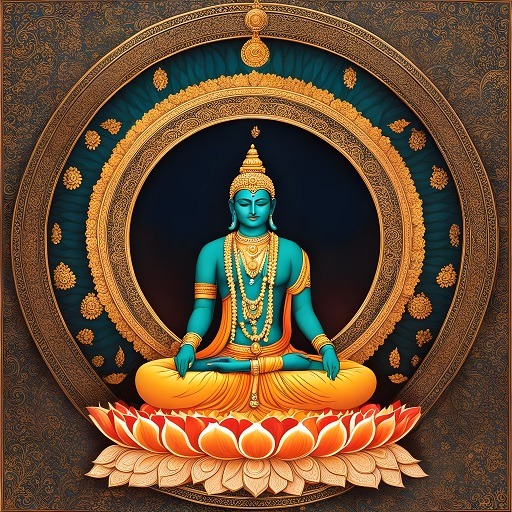
View On WordPress
#Belief system in Sanatana Dharma#Cosmic harmony in Hinduism#Diverse deities in Hindu pantheon#Eternal truths in Hinduism#Hindu scriptures and beliefs#Karma and Dharma philosophy#Path to self-realization#Pursuit of moksha#Tantric practices and insights#Unity and interconnectedness
1 note
·
View note
Note
How did you start and elarn abt vedic astrology and for what do you use it for?
Overview {Vedic astrology or “Jyotish” is an ancient Indian system of astrology rooted in the Vedas/ Hindu scriptures. It interprets the influence of celestial bodies such as planets (Grahas), stars (nakshatras), and constellations (Rahis) on human life and events. It also uses divisional charts (Vargas), Dashas, and transits to predict personal life events.}
I have went through some messed up things especially in my childhood. Which drew me to astrology and psychology. Kind of a way that I was subconsciously trying to find answers. I started learning Vedic astrology after I learned almost everything about tropical because some parts wasn’t resonating with me. It just felt too surface level to me. I needed a deeper analysis.
I feel Vedic astrology is more accurate when it comes to predicting things like future spouse, career, children, etc. More in depth when it comes to one’s thoughts, soul mission, personality, positive & negative qualities. Also, you can predict world events more accurately. In Vedic the description of planets & houses are less black and white when it comes to how they function. Cough cough, or should I say sugarcoated
Even when you get into nakshatras of someone’s chart. The things they say and the way they act start to make sense because it correlates to the deity/story of the nakshatra.
I kind of started off by watching YouTube videos from sidereal/ Vedic astrologist like KRS & Claire Nakti then I started doing my own research by reading.
Here’s some resources I can think off the top of my head
Vedic blogs
@vindelllas
@yourmyheaven
@conceptionsofconciousness
@kiraastro
@amtalchemy
@chitra111goddess
@lychee-angelica
@venussaidso
@laifromthecosmos
@shukraastro
@makingspiritualityreal
YouTube Channels
Thehiddenoctave
Claire nakti
KRS channel
Vic Dicara’s Astrology
Joni patry
AstroMartine
Addittya Tamhankar Podcasts
Poonman Dutta (Satyamshakti)
astrologyloka
Daquan jones
Dr Arjun Pai Astrology
Vedic Oracle
Websites
Books
https://ia904500.us.archive.org/5/items/1050-astrology-books_202107/Bepin%20Behari_Fundamentals%20of%20Vedic%20Astrology.pdf
https://vedicastroamit.com/wp-content/uploads/2024/08/Yoga-Jyotish-book.pdf
#Vedic astrology#jyotish#sidereal astrology#astrology#nakshatras#astro observations#vedic astro notes#astro notes#astrology observations#hindu gods#niyasruledbyvenus
82 notes
·
View notes
Text

"Be like the sun for grace and mercy. Be like the night to cover others' faults. Be like running water for generosity. Be like death for rage and anger. Be like the Earth for modesty. Appear as you are. Be as you appear." - Rumi
Surya - Atman Talon Abraxas
SURYA-GOD OF LIGHT, THE SUN GOD
The Sun God Surya holds a position of reverence in Hinduism as the origin of life-giving light and cosmic power. Surya God – sun god rides a radiant chariot with seven horses according to Hindu mythology while serving as a key figure in rituals and spiritual practices. The existence of Surya represents more than religious divisions as it stands for life force, insightful wisdom and the perpetual cycle of creation. The Sun God Surya originates from Vedic traditions where his impact extends through art and philosophy as a symbol of the ancient human reverence for the Sun as life’s sustainer.
Mythology of Surya
Hindu scriptures especially the Rigveda trace Surya’s origins- the sun god’s origin while honoring him as the entity that eliminates darkness and represents truth. Vedic mythology describes Surya as a progeny of Sage Kashyapa and Aditi which qualifies him as an Aditya among the twelve solar gods. Sanjana, who serves as Surya’s wife and is known as Saranyu the goddess of consciousness, gave birth to Yama the god of death and Shani the god of justice along with Yami.
The enthralling myth tells of Sanjana who abandoned Surya after she could not endure his blazing radiance and transformed into a mare. After reducing his brightness to match her level Surya transformed into a horse to reunite with her. The story illustrates Surya’s divine qualities while depicting how immense power can be tempered with kindness.
Aruna stands as a crucial figure in Surya’s mythology because he serves as Surya’s charioteer and represents the personification of dawn. The golden chariot of Surya is drawn by seven horses that embody the colors of the spectrum and the days of the week under the guidance of Aruna.
Symbolism of Surya
Surya embodies more than the solar phenomenon as he stands for our internal light of awareness which leads to spiritual enlightenment and dispels ignorance. The depiction of his shining form with a halo or aureole represents the divine radiance of enlightenment. The seven horses drawing Surya’s chariot represent the seven energy centers in human physiology which emphasizes his connection to spiritual well-being.
The iconography of Surya displays him with lotuses in both hands to represent purity alongside the expansion of spiritual awareness. The celestial journey of his golden chariot represents the constant flow of time and the perpetual cycle of the cosmos. Surya represents the Atman or soul that lights up the way toward righteousness and truth.
20 notes
·
View notes
Text
Lord Ganesha | Remover of Obstacles


Lord Ganesha, also known as Ganapati, Vinayaka, or Pillaiyar, is one of the most revered deities in Hinduism. Recognizable by his elephant head, Ganesha is worshipped as the remover of obstacles, the patron of arts and sciences, and the deva of intellect and wisdom. His presence is invoked before the beginning of any new venture or journey, symbolizing auspicious beginnings and successful outcomes. Ganesha's origins, characteristics, and the rich tapestry of stories associated with him provide profound insights into Hindu philosophy and culture.
Birth and Origins
Ganesha's birth is narrated in various scriptures, most notably the Shiva Purana and the Skanda Purana. According to these texts, Ganesha was created by Goddess Parvati, the consort of Lord Shiva, from the turmeric paste she used for her bath. Parvati fashioned a boy from this paste and breathed life into him. She then set him at the entrance of her abode to guard it while she bathed. When Shiva returned and attempted to enter, Ganesha, unaware of who Shiva was, stopped him. In the ensuing conflict, Shiva, in a fit of rage, severed Ganesha's head. To console the grief-stricken Parvati, Shiva promised to bring Ganesha back to life. He instructed his followers to find the head of the first living being they encountered, which happened to be an elephant. Shiva placed the elephant's head on Ganesha's body, reviving him and blessing him to be worshipped before all other deities.
Characteristics and Symbolism
Physical Appearance
Ganesha's distinctive elephant head symbolizes wisdom, understanding, and a discriminating intellect that one must possess to attain perfection in life. His large ears signify that a perfect person is the one who possesses a great capacity to listen to others, and his small mouth suggests he talks less and listens more. The trunk of Ganesha is capable of holding a lotus or a modak (a sweet) and symbolizes high adaptability and efficiency.
Attributes
Large Head: Represents wisdom and knowledge.
Small Eyes: Denote concentration and focus.
Trunk: Indicates adaptability and strength.
Big Ears: Symbolize a keen ability to listen and absorb ideas.
Small Mouth: Emphasizes the importance of speaking less.
One Broken Tusk: Signifies the acceptance of the good and the bad in the world.
Iconography
Ganesha is often depicted with a potbelly, symbolizing the capacity to digest both good and bad experiences. He usually holds an axe (to cut off bonds of attachment), a rope (to pull devotees closer to their highest goal), and a modak (representing the sweetness of the soul). His vehicle, the mouse, symbolizes humility and the ability to overcome desires.
Personality and Traits
Ganesha is known for his intellect, wisdom, and benevolence. He is also celebrated for his humor and playfulness, which are evident in numerous stories about him. Despite his divine status, Ganesha is approachable and understanding, making him beloved among devotees. His ability to solve problems and remove obstacles makes him a popular figure for those seeking guidance and support in their endeavors.
Family
Ganesha is part of the Shaivite tradition and is closely associated with his parents, Lord Shiva and Goddess Parvati. His brother is Kartikeya, also known as Murugan, who is the god of war. The familial relationships and stories involving these deities highlight the dynamics of divine interaction and provide moral and spiritual lessons.
Parents: Shiva and Parvati
Shiva, the destroyer in the Hindu trinity, represents the aspect of God that brings about transformation and change, while Parvati represents love, fertility, and devotion. Their union symbolizes the balance of male and female energies in the universe.
Brother: Kartikeya
Kartikeya, also known as Skanda or Murugan, is a warrior deity. The sibling rivalry and companionship between Ganesha and Kartikeya are depicted in various myths, emphasizing different aspects of duty, strength, and wisdom.
Popular Stories
Ganesha and the Mango
One of the well-known stories of Ganesha is the competition between him and Kartikeya to win a mango, a fruit of immortality and wisdom. Shiva and Parvati decided that the one who could circle the world three times first would win the mango. Kartikeya immediately set off on his peacock, but Ganesha, knowing he couldn't match his brother's speed, simply circled his parents three times, stating that for him, they were his world. Pleased by his wisdom, Shiva and Parvati gave him the mango.
The Writing of the Mahabharata
Another significant tale is Ganesha's role as the scribe of the Mahabharata. Sage Vyasa sought someone who could transcribe the epic as he recited it. Ganesha agreed to take on the task on the condition that Vyasa would recite it without pause. To ensure that Ganesha would write carefully, Vyasa composed the verses in a complex meter, which required Ganesha to pause occasionally to understand them, giving Vyasa time to compose further.
Association with Astrology
In Vedic astrology, Ganesha is associated with the planet Ketu. Ketu represents obstacles, detachments, and spiritual pursuits, qualities that align with Ganesha’s role in removing obstacles and guiding devotees on the path of wisdom and spirituality. Devotees often invoke Ganesha’s blessings to mitigate the malefic effects of Ketu in their astrological charts.
#vedic astrology#astrology#sidereal astrology#nakshatra#sidereal#vedic#jyotish#desi#hinduism#ganesha#hindu mythology#ketu
52 notes
·
View notes
Text

I strive for neutrality here, but I am genuinely quite angry at your invoking of hindu scripture for sleazy scammy purposes.
That aside; I have run many blogs within and without the Sonic fandom - why is this the 4th time I have received specifically religious dodgy links sent specifically to this blog, when I never got them before? Is there something about the act of polling sonic fans that encourages this?
I will be blocking anyone who does this without responding, as I had been doing, but I do wonder if anyone has insight or similar experiences.
10 notes
·
View notes
Text
Devshayani Ekadashi Vrat 2025 — Rituals, Remedies & Astrological Insights

In the heart of India's spiritual traditions lies the sacred observance of Devshayani Ekadashi, also known as Ashadhi Ekadashi. Celebrated during the Shukla Paksha (bright fortnight) of the month of Ashadha, Devshayani Ekadashi marks the beginning of Chaturmas — a spiritually significant four-month period when Lord Vishnu is believed to enter a cosmic sleep (Yog Nidra). In 2025, this auspicious vrat falls on 6 July, and it holds profound meaning for devotees across the country.
In this detailed blog, Anant Gyan, the Best Astrologer in Delhi, takes you through the spiritual essence, rituals, astrological impact, and easy remedies associated with Devshayani Ekadashi Vrat 2025. Read on to understand how this divine occasion can help bring peace, healing, and spiritual progress in your life.
What is Devshayani Ekadashi?
Devshayani Ekadashi, also called Hari Shayani Ekadashi or Padma Ekadashi, is the 11th day (Ekadashi) of the Shukla Paksha in Ashadha month. The word "Devshayani" means "God sleeping," and it signifies the time when Lord Vishnu, the preserver of the universe, enters a four-month-long yogic slumber in the Ksheer Sagar (Ocean of Milk).
According to Vedic beliefs, during these four months, no auspicious ceremonies such as weddings, housewarmings, or upanayanam (sacred thread ceremony) are performed.
Spiritual Importance of Devshayani Ekadashi
1. Beginning of Chaturmas
This vrat marks the start of Chaturmas, a period of increased spiritual discipline. It is a time when saints and spiritual seekers focus more on penance, reading scriptures, and self-control.
2. Attaining Moksha (Liberation)
Devotees who observe this fast with full devotion are believed to gain freedom from the cycle of birth and death. According to Hindu scriptures, observing this fast brings the same merit as performing a thousand Ashvamedha Yajnas.
3. Balancing Karma
As per Anant Gyan, the Best Astrologer in Delhi, the planetary energy during this day allows us to neutralize our past karmas through fasting, mantra chanting, and selfless service.
Rituals to Follow on Devshayani Ekadashi 2025
Morning Routine:
Wake up early before sunrise
Take a bath with Ganga Jal or clean water
Wear clean yellow or white clothes
Clean the puja area and decorate it with flowers
Worship Lord Vishnu:
Offer tulsi leaves, yellow flowers, fruits, and sweets
Light a diya with pure ghee
Chant Vishnu Sahasranama, Om Namo Bhagavate Vasudevaya
Place a small idol or image of Vishnu on a peepal leaf
Fasting Rules:
Complete fast or consume only fruits, milk, and vrat-friendly foods
Avoid grains, rice, pulses, onion, garlic, alcohol, and non-vegetarian food
Break the fast (Parana) the next day during the prescribed time
Astrological Significance of Devshayani Ekadashi
According to Anant Gyan, the Best Astrologer in Delhi, this day is astrologically powerful because of the following alignments:
1. Sun and Moon Alignment
The Sun in Gemini and Moon in Cancer or Leo during this period helps enhance self-awareness and emotional healing.
2. Start of a New Energy Cycle
It is the best time to start internal purification through mantra chanting, meditation, and mindful living.
3. Planetary Shifts
Important planetary transitions like Saturn's retrograde or Jupiter's position in Taurus can bring karmic shifts. Devshayani Ekadashi becomes a shield against malefic effects.
4. Powerful Time for Remedies
Mantras, donations, and spiritual disciplines practiced on this day bring amplified results.
Zodiac-Based Remedies & Tips by Anant Gyan
Aries (Mesh Rashi):
Chant "Om Namo Narayanaya" 108 times. Donate jaggery and red clothes to the needy.
Taurus (Vrishabh Rashi):
Offer yellow sweets and water to Tulsi plant. Avoid ego conflicts.
Gemini (Mithun Rashi):
Meditate for clarity and chant Vishnu Sahasranama. Offer yellow fruits.
Cancer (Karka Rashi):
Light a diya of ghee at home temple. Avoid emotional instability.
Leo (Simha Rashi):
Perform aarti of Lord Vishnu with camphor. Donate food.
Virgo (Kanya Rashi):
Chant "Om Vishnave Namah" and do annadaan (food donation).
Libra (Tula Rashi):
Pray for family harmony. Offer sandalwood paste to the idol.
Scorpio (Vrishchik Rashi):
Light a lamp in front of a peepal tree and chant Vishnu Gayatri.
Sagittarius (Dhanu Rashi):
Wear yellow clothes and feed cows. Stay away from arrogance.
Capricorn (Makar Rashi):
Offer fruits and milk in temple. Avoid stress and overthinking.
Aquarius (Kumbha Rashi):
Observe silence and meditate on Lord Vishnu's image.
Pisces (Meen Rashi):
Chant Bhagavad Gita verses and donate to spiritual organizations.
Powerful Mantras for Devshayani Ekadashi
Om Namo Bhagavate Vasudevaya
Om Narayanaya Namah
Vishnu Sahasranama (Recitation)
Do’s and Don’ts
Do’s:
Keep a clean and positive atmosphere
Perform tulsi puja
Offer yellow foods and light lamps
Meditate and chant regularly
Observe self-discipline and control desires
Don’ts:
Don’t consume grains, alcohol, or non-veg food
Don’t argue or speak harshly
Don’t sleep during the daytime
Don’t engage in negative thinking
Story Behind Devshayani Ekadashi
According to Padma Purana, once King Mandata’s kingdom suffered from famine. Upon seeking advice from sage Angira, the king was told to observe Devshayani Ekadashi. After doing so, the famine ended, and peace returned to the kingdom. This story symbolizes how devotion and discipline can solve even the gravest problems.
Modern Relevance of Devshayani Ekadashi
In today’s world, where mental stress, uncertainty, and confusion are common, Devshayani Ekadashi offers a beautiful opportunity to pause, reflect, and reset. With ancient rituals and the astrological guidance of experts like Anant Gyan, the Best Astrologer in Delhi, you can align your life with divine energies.
This vrat helps us:
Detox emotionally and spiritually
Reset our karmic patterns
Seek divine grace for future decisions
Gain peace, clarity, and inner happiness
Final Thoughts by Anant Gyan
"Devshayani Ekadashi is not just a religious ritual but a spiritual doorway to connect with the supreme energy of the universe. It is the day to shut down outer noise and awaken your inner light."
Let this 6 July 2025 be the day you begin your spiritual transformation. Follow simple rituals, apply easy remedies, and take astrological advice from Anant Gyan, the Best Astrologer in Delhi, to see miraculous changes in your life.
2 notes
·
View notes
Text
Vedic Astrology: Ancient Wisdom for Modern Life

Vedic astrology, also known as Jyotish Shastra, is one of the oldest and most revered systems of astrology in the world. Rooted in the sacred texts of India, it provides profound insights into human destiny, karma, and cosmic influence. Unlike Western astrology, which is based on the tropical zodiac, Vedic astrology follows the sidereal zodiac, which accounts for the fixed positions of constellations. This ancient science helps individuals understand their life's purpose, strengths, and challenges through planetary movements and alignments.
The Origins and Significance of Vedic Astrology
Vedic astrology has its roots in the Vedas, the oldest scriptures of Hindu philosophy, written thousands of years ago. The Rishis (sages) developed this system to help individuals align their lives with the cosmic order. The word "Jyotish" translates to "science of light," emphasizing how celestial bodies influence life on Earth. The practice of Vedic astrology is deeply connected to karma and dharma, suggesting that planetary positions at birth shape one's fate and spiritual journey.
Vedic astrology was traditionally used for various purposes, including determining auspicious times for rituals, marriages, and major life events. Kings and rulers relied on astrologers to guide them in making important decisions related to governance, warfare, and alliances. Today, this ancient practice continues to be a source of guidance for individuals seeking clarity in different aspects of life.
The Key Components of Vedic Astrology
Vedic astrology is based on several key elements that work together to provide a comprehensive astrological reading:
1. The Twelve Houses (Bhavas)
Each house in a Vedic birth chart represents a specific aspect of life, such as career, relationships, wealth, health, and spirituality. The positioning of planets in these houses influences how different areas of life unfold.
First House (Lagna/Bhava) – Represents the self, personality, and physical body.
Second House – Governs wealth, family, and speech.
Third House – Signifies communication, siblings, and courage.
Fourth House – Represents home, mother, and emotional security.
Fifth House – Rules creativity, education, and children.
Sixth House – Associated with health, enemies, and obstacles.
Seventh House – Governs marriage, relationships, and partnerships.
Eighth House – Represents transformation, longevity, and hidden matters.
Ninth House – Rules higher learning, spirituality, and fortune.
Tenth House – Associated with career, reputation, and status.
Eleventh House – Represents gains, networking, and ambitions.
Twelfth House – Signifies losses, spiritual growth, and subconscious mind.

2. The Twelve Zodiac Signs (Rashis)
The zodiac signs in Vedic astrology differ slightly from their Western counterparts due to the sidereal system. Each sign has unique characteristics that influence personality traits and life experiences.
Aries (Mesha) – Courageous, energetic, and assertive.
Taurus (Vrishabha) – Patient, reliable, and artistic.
Gemini (Mithuna) – Adaptable, intellectual, and curious.
Cancer (Karka) – Emotional, nurturing, and protective.
Leo (Simha) – Confident, ambitious, and charismatic.
Virgo (Kanya) – Practical, analytical, and detail-oriented.
Libra (Tula) – Diplomatic, social, and fair-minded.
Scorpio (Vrishchika) – Intense, secretive, and passionate.
Sagittarius (Dhanu) – Optimistic, adventurous, and philosophical.
Capricorn (Makara) – Disciplined, ambitious, and responsible.
Aquarius (Kumbha) – Innovative, humanitarian, and independent.
Pisces (Meena) – Imaginative, intuitive, and compassionate.
3. The Nine Planets (Navagrahas)
Vedic astrology considers nine celestial bodies that play crucial roles in shaping an individual’s life.
Sun (Surya) – Represents self-confidence, vitality, and leadership.
Moon (Chandra) – Governs emotions, mind, and intuition.
Mars (Mangala) – Symbolizes courage, aggression, and strength.
Mercury (Budha) – Represents intellect, communication, and logic.
Jupiter (Guru) – Governs wisdom, spirituality, and expansion.
Venus (Shukra) – Associated with love, beauty, and material pleasures.
Saturn (Shani) – Represents discipline, karma, and endurance.
Rahu – A shadow planet linked to desires, illusions, and ambitions.
Ketu – A shadow planet signifying detachment, spirituality, and past karma.
4. The Nakshatras (Lunar Mansions)
There are 27 Nakshatras or lunar constellations in Vedic astrology. These star clusters add deeper meaning to an individual’s personality and destiny based on their Moon sign. Each Nakshatra has a ruling deity and planetary influence that contributes to a person’s nature and life path.
5. Dasha System (Planetary Periods)
The Dasha system helps predict major life events by analyzing different planetary cycles. Each planet rules a certain period of life, bringing opportunities and challenges. The most commonly used Dasha system is the Vimshottari Dasha, which divides life into planetary periods of varying lengths.
How Vedic Astrology Works
A Vedic astrologer creates a Kundali (birth chart) based on the date, time, and place of birth. This chart reveals planetary positions at the moment of birth and helps in predicting major life trends. Some of the key readings in Vedic astrology include:
Career Predictions: Choosing the right profession based on planetary placements.
Relationship Compatibility: Matching horoscopes for marriage or partnerships.
Health and Well-being: Identifying periods of good and bad health.
Financial Growth: Analyzing financial prospects through planetary influences.
Spiritual Guidance: Understanding one's soul purpose and karmic influences.
The Relevance of Vedic Astrology in Modern Life
Despite being an ancient practice, Vedic astrology remains highly relevant in the modern world. Many individuals turn to astrology for guidance in making important life decisions. Whether it’s choosing a career, understanding relationships, or seeking spiritual growth, Vedic astrology provides deep insights.
Corporate professionals consult astrologers for business decisions, couples use it for marriage compatibility, and individuals seek remedies for planetary imbalances. With the rise of digital astrology platforms, accessing personalized horoscope readings has become easier than ever.
Conclusion
Vedic astrology is more than just fortune-telling; it is a spiritual science that helps individuals align with cosmic rhythms. By understanding planetary influences, one can make informed decisions, overcome challenges, and lead a fulfilling life. With its profound wisdom, Vedic astrology continues to illuminate the paths of millions worldwide, bridging the gap between destiny and free will.
3 notes
·
View notes
Text
भाग 5

The Divine Stroke of Consciousness in Existence

The next step is to follow “one-point contemplation” or living in the present. In the Rāmāyaṇa context, it represents one point of determination or “the war over Lankā”. Once that happens firstly the tamas (Kumbhakaran), then the rajas (Meghnad), and finally the ego (Rāvaṇa) dies. Both tamas and ego die automatically by the consciousness (Rāma) but for killing the rajas, one has to conquer it with the mind (Lakṣmaṇa).
Once this happens, the Sattva or Vibhīṣaṇa takes over and the mind, body and soul are reunited leading to inner happiness again.
Lastly, when Rāma, Lakṣmaṇa and Sītā go back to their journey of life, back to Ayodhyā, Hanumān goes with them, as in Ayodhyā, Daśaratha is no more.
If you cannot control your ten senses by yourself you need to continue Prāṇāyāma or carry Hanumān with you for life. Vālmiki’s Rāmāyaṇa has a direct and indirect meaning. Some see in it only a great literary work dealing with the heroic exploits of Rāma. But following the tradition, that scriptural texts convey something more than just a story, and that this forms their essence, scholars of the epic have found deep spiritual meanings in it, and they have interpreted it as an account of man’s ethical and spiritual progress. Incarnations are both human and divine, so they are open to either interpretation. Where a cursory understanding reveals only an interesting narrative, a sage with insight can find deep spiritual meanings. Indeed, both views could coexist.

The stories and achievements of divine incarnations may look like literary fiction or mere poetical narratives to a man who studies them from a purely literary or narrative point of view. Sages like Vālmiki and Vyāsa, who have gained penetrating vision through their spiritual development, could see a wealth of meaning in them. In the course of their attempt to interpret them and share the same with a greater number of people, they may use the poetical method and the Paurāṇika way of depiction.
The intention of such writings of sages is not to teach history or geography but to impress on people the mystery of divine existence and the spiritual destiny of man.
As the sun set slowly in the west, we've come up done and dusted!

@hinducosmos @hindu-aesth @sanatantemple @ramayantika
@ancienthinduism @maithili90-blog-blog
@bishh-kanya @devimayi @bharatiya-naari-sab-pe-bhaari
@janaknandini-singh999 @swayamev @rhysaka @achyutapriya
@krsnaradhika
#desiblr#tumblr#hindublr#bharat#ramayana#sanatandharma#desi aesthetic#ayodhya#janakpurdham#spilled ink#light academia#india#writers on tumblr
16 notes
·
View notes
Text
Sanatan Dharma: The Eternal Path of Truth

Sanatan Dharma, often referred to as Hinduism, is not just a religion—it is the eternal way of life. Rooted in the Vedas, Upanishads, and Bhagavad Gita, it is a spiritual science that transcends time, offering truth, self-realization, and liberation (moksha).
What is Sanatan Dharma?
The word Sanatan means eternal, and Dharma refers to the righteous duty, cosmic order, and universal truth. Unlike sectarian belief systems, Sanatan Dharma is not founded by any single prophet—it is the divine wisdom of the Rishis (sages) who realized ultimate reality.
Core Teachings of Sanatan Dharma
Advaita Vedanta – The Ultimate Truth
The great sage Adi Shankaracharya emphasized Advaita (non-duality)—the realization that Brahman (Supreme Reality) alone exists, and the perceived world is Maya (illusion).
Bhagavad Gita – The Essence of Dharma
The Bhagavad Gita reveals the highest knowledge given by Lord Krishna to Arjuna, guiding humanity on the path of duty (karma), devotion (bhakti), and knowledge (jnana).
The Cycle of Karma & Rebirth
Sanatan Dharma teaches Karma (action and consequences) and Samsara (cycle of rebirth)—our actions shape our destiny, and liberation comes through self-realization.
Refuting Non-Vedic Beliefs
Sanatan Dharma stands on eternal Vedic principles, unlike man-made ideologies that emerged later. Many misconceptions exist about Hinduism, often propagated by non-Vedic sects. Our mission is to clarify the truth, expose distortions, and protect Sanatan values.
Join the Journey
Sanatan Dharma is not just for Hindus—it is a universal truth for all seekers of wisdom. Follow SanatanDay for more insights on Vedic scriptures, Adi Shankaracharya's teachings, and deep spiritual knowledge.
Let’s restore the Sanatan Vedic truth and refute falsehoods with knowledge! Jai Sanatan Dharma!
2 notes
·
View notes
Text
Wisdom of Ancient Indian Education: The 8 Limbs of Yoga and Beyond
Since times before the antiquities, Indian education system has been very robust. One of the core objective was to shape the individual and the society with highest virtues. How an individual should be is mentioned in various scriptures like Ved, Puran, Upanishad and others. In present times, one may consider these texts as purely religious scriptures. It is a common belief of most of the people,…

View On WordPress
#Ancient Civilizations#ancient hindu scriptures#Ancient India#ancient indian science#Ancient Knowledge#Ancient Knowledge System#Ancient texts#cultural heritage#Culture#Exploring Hindu Puranas#Hindu civilization#Hindu Scriptural Insights#Hindusim#India&039;s heritage#Indian education system#Indian Religious Texts#Lost Indian Knowledge#qualityoflife#Rediscovering Indian culture#Sacred Hindu Texts#Spiritual Wisdom#Yam&Niyam#yoga#yogaphilosophy
0 notes
Text
Top 5 YouTube Channels to Learn Indian Mythology & History
Introduction
India’s rich mythology and history are filled with epic stories, spiritual wisdom, and ancient civilizations that continue to inspire generations. If you’re fascinated by the Ramayana, Mahabharata, Vedas, and historical events, these 5 YouTube channels are perfect for you. They explore the deepest aspects of Indian mythology and history, bringing them to life in an engaging way.
1. The Sanskrit Channel – Best for Understanding Vedic Texts
🔗 Watch Here
If you want to understand Sanskrit scriptures, Vedas, and Upanishads, this is the channel for you. It simplifies ancient texts, making them accessible and easy to understand.
Why Watch? ✅ Explains complex Sanskrit literature in simple words. ✅ Covers Hindu philosophy, Yoga, and ancient texts.
2. Sangam Talks – Deep Discussions on Indian History
🔗 Watch Here
Sangam Talks features historical experts, scholars, and researchers discussing topics like Dharma, Indian history, and forgotten legends. If you enjoy intellectual debates and deep-dive content, this is a must-watch.
Why Watch? ✅ Expert lectures on ancient Indian wisdom. ✅ In-depth analysis of Indian history and philosophy.
3. Xenius Minds – Blending Mythology with Modern Insights
🔗 Watch Here
This channel is a powerhouse of mythology, history, and deep insights for modern thinkers. It takes ancient knowledge from Hindu scriptures and applies it to modern-day challenges, success, and life lessons.
Why Watch? ✅ Connects mythology, self-growth, and modern wisdom. ✅ Covers Ramayana, Mahabharata, Bhagavad Gita, and more.
4. Indian Monk – Hidden Truths About Hinduism
🔗 Watch Here
Indian Monk dives into mystical aspects of Hinduism, spiritual practices, and ancient temples. If you love exploring hidden truths, this is the perfect channel for you.
Why Watch? ✅ Unveils mystical secrets and spiritual knowledge. ✅ Explores Hindu temples, gods, and rituals.
5. Epic Channel – The Best in Mythology & History
🔗 Watch Here
The Epic Channel is a leading platform for historical documentaries, mythological deep dives, and forgotten stories from India's past. If you want high-quality storytelling, this is your go-to channel.
Why Watch? ✅ Epic storytelling of Indian history and mythology. ✅ HD-quality documentaries on Indian kings, battles, and legends.
Conclusion
Whether you’re a history lover, mythology enthusiast, or spiritual seeker, these 5 YouTube channels will help you explore India’s past like never before.
👉 Which channel is your favorite? Let me know in the comments!
If you found this blog useful, share it with others who love Indian history and mythology.
2 notes
·
View notes
Text
“The World’s Oldest Religion, and It’s Connection with Modern Science”
The World’s Oldest Religion: An In-Depth Exploration of Hinduism
Hinduism is the world’s oldest religion, and has been a vibrant and integral part of human history for thousands of years. Indeed, with its deep roots, rich mythology, and profound philosophical insights, Hinduism continues to influence millions of lives today. Therefore, this blog aims to explore the origins, beliefs, practices, and cultural significance of the world’s oldest religion, Hinduism, shedding light on why it remains such a vital and living tradition. After all, who is the oldest religion? That is Hinduism.
1. Origins of Hinduism
Prehistoric Roots
The world’s oldest religion, Hinduism’s origins, can be traced back to the ancient Indus Valley Civilization, which flourished around 3300–1300 BCE in what is now modern-day Pakistan and northwest India. The discovery of archaeological artifacts, such as seals showing people in yoga poses and sacred animals, clearly suggests that these early religious practices may have, in fact, influenced the development of later Hinduism. These findings indicate a deep connection between humans, nature, and the divine, themes that are central to Hinduism.
The Vedic Period
The Vedic Period, spanning from approximately 1500 to 500 BCE, marks a significant era in the development of Hinduism. This period saw the migration of Indo-Aryans into the Indian subcontinent, bringing with them the sacred texts known as the Vedas. The Vedas—Rigveda, Samaveda, Yajurveda, and Atharvaveda—are the oldest known scriptures of Hinduism and are composed in Sanskrit. They contain hymns, rituals, and philosophical teachings that form the core of Vedic religion. Rigveda, in particular, is considered the oldest, with hymns dedicated to various deities, reflecting a polytheistic belief system.
Development of Major Schools
Hinduism was the world’s oldest religion when it evolved, and it gave rise to various philosophical schools, each offering unique interpretations of spiritual and existential questions. The Upanishads, composed between 800 and 500 BCE, marked a shift from ritualistic practices to introspective and philosophical inquiry. These texts explored the nature of reality, the self (Atman), and the ultimate reality (Brahman), laying the groundwork for later schools of thought like Vedanta, which emphasizes the unity of the individual soul with the universal spirit.
2. Core Beliefs and Philosophies
Dharma (Duty/Righteousness)
Dharma is a fundamental concept in Hinduism, encompassing the moral and ethical code that guides individuals’ actions and societal roles. It varies according to one’s age, caste, gender, and occupation, promoting harmony and order within society. Dharma is not only about religious duties but also about living in accordance with one’s true nature and fulfilling one’s responsibilities toward family, society, and the world.
Karma (Action and Consequence)
The concept of Karma is central to Hindu thought, emphasizing that every action has consequences. Good deeds lead to positive outcomes, while harmful actions result in suffering. This belief in cause and effect extends beyond a single lifetime, influencing one’s future incarnations. The law of Karma encourages ethical living and personal responsibility, as individuals are seen as the architects of their destinies.
Samsara (Cycle of Rebirth)
Samsara refers to the cycle of birth, death, and rebirth, which is a fundamental belief in Hinduism. Moreover, it is driven by Karma, meaning one’s actions determine the nature of future existences. Consequently, this cycle is often seen as a state of suffering and bondage, from which individuals seek liberation. Ultimately, the goal of Hindu spiritual practice is to break free from Samsara and attain Moksha, a state of eternal bliss and union with the divine.
Moksha (Liberation)
Moksha is the liberation from the cycle of Samsara, achieved through self-realization and an understanding of the true nature of the self and the universe. To attain Moksha, Hinduism offers various paths, each catering to different temperaments and inclinations. Firstly, there is Bhakti Yoga (the path of devotion), which focuses on love and devotion to a personal deity. Secondly, Jnana Yoga (the path of knowledge) emphasizes self-inquiry and the realization of the unity between Atman and Brahman. Thirdly, Karma Yoga (the path of selfless action) involves performing one’s duties without attachment to outcomes. Lastly, Raja Yoga (the path of meditation) concentrates on controlling the mind and senses to achieve spiritual enlightenment.
FULL VERSION : https://learntrio.com/the-worlds-oldest-religion-hinduism/
#books#literature#reading#religion#hinduism#krishna#bhagwad gita#bhagavad gita#bhagwan#lord krishna#radha krishna
2 notes
·
View notes
Text
Dharmic Religionss: A Journey into Ancient Beliefs
Dharmic Religionss is a term used to describe a group of religions that originated in the Indian subcontinent. These include Hinduism, Buddhism, Jainism, and Sikhism. These religions share common beliefs and practices, focusing on the concept of "dharma," which means duty, righteousness, and moral law. Let's explore the fascinating world of Dharmic Religionss and understand how they shape the lives of millions of people.

Hinduism: The Oldest Dharmic Religion
Hinduism is the oldest of the Dharmic Religions, with roots that go back over 4,000 years. It is a complex religion with a variety of gods and goddesses, rituals, and philosophies. The core belief in Hinduism is the idea of dharma, which means living in accordance with one's duty and righteousness. Hindus believe in reincarnation, where the soul is reborn in a new body after death. The ultimate goal is to achieve moksha, or liberation from the cycle of rebirth.
Hinduism has many sacred texts, including the Vedas, Upanishads, and the Bhagavad Gita. These texts provide guidance on how to live a righteous life. Temples, festivals, and pilgrimages are also important aspects of Hindu worship. One popular festival is Diwali, the festival of lights, which symbolizes the victory of light over darkness.
Buddhism: The Path to Enlightenment
Buddhism is another significant Dharmic Religion. It was founded by Siddhartha Gautama, known as the Buddha, in the 5th century BCE. Buddhism teaches that life is full of suffering caused by desire and attachment. To overcome this suffering, one must follow the Eightfold Path, which includes right understanding, right thought, right speech, right action, right livelihood, right effort, right mindfulness, and right concentration.
Buddhists seek to attain Nirvana, a state of ultimate peace and enlightenment. Meditation is a key practice in Buddhism, helping individuals to develop mindfulness and insight. The teachings of the Buddha are collected in the Tripitaka, also known as the Pali Canon.
Jainism: The Path of Non-Violence
Jainism is another ancient Dharmic Religion that emphasizes non-violence (ahimsa) and self-discipline. Founded by Mahavira in the 6th century BCE, Jainism teaches that every living being has a soul and deserves respect. Jains follow five main vows: non-violence, truthfulness, non-stealing, celibacy, and non-possession.
Jain monks and nuns lead a strict ascetic lifestyle, renouncing worldly possessions and practicing intense meditation. Lay Jains also follow these principles, though in a less rigorous manner. Jain temples, known for their intricate architecture and sculptures, are places of worship and meditation.
Sikhism: The Religion of the Gurus
Sikhism is the youngest of the Dharmic Religionss, founded in the 15th century by Guru Nanak Dev Ji. Sikhism emphasizes devotion to one God, equality, and service to humanity. The teachings of the ten Sikh Gurus are compiled in the Guru Granth Sahib, the holy scripture of Sikhism.
Sikhs gather for worship in Gurdwaras, where they participate in prayer, singing hymns, and community service. One key practice in Sikhism is the Langar, a community kitchen where free meals are served to all, regardless of religion or background. This practice embodies the Sikh values of equality and selfless service.
The Influence of Dharmic Religionss
Dharmic Religionss have a profound impact on the culture and daily life of millions of people. They influence art, literature, music, and social customs. Festivals like Diwali, Vesak, Mahavir Jayanti, and Vaisakhi bring communities together, fostering a sense of unity and celebration.
Furthermore, the principles of dharma, non-violence, and compassion taught by these religions contribute to a more harmonious society. The emphasis on meditation and mindfulness has also gained global recognition, promoting mental well-being and inner peace.
Conclusion
Dharmic Religionss offer a rich tapestry of beliefs and practices that guide individuals on a path of righteousness and spiritual growth. Whether it's the ancient rituals of Hinduism, the mindful practices of Buddhism, the non-violent principles of Jainism, or the devotional worship in Sikhism, each religion provides a unique way to connect with the divine and achieve a meaningful life.
Exploring Dharmic Religionss helps us appreciate the diversity and depth of human spirituality. By understanding and respecting these ancient traditions, we can foster greater tolerance and harmony in our world.
For more insights into Dharmic Religions and their impact on modern life, visit omtvlive. Here, you will find a wealth of information and resources to deepen your understanding and appreciation of these profound spiritual paths. Remember, the journey to spiritual enlightenment and inner peace is a continuous process, and Dharmic Religionss offer timeless wisdom to guide us along the way. So, stay curious, keep exploring, and let omtvlive be your companion in this spiritual journey.
#vedic philosophy#classical hinduism#hindu philosophy#hindu religion philosophy#hindu vedanta#jnana yoga#advaita vedanta philosophy#advaita vedanta in hindi#vaishnava tradition#jain religion#tantric traditions#vedic religion#devotional worship#modern hinduism#vedic scriptures#spiritual realization#dharmic religions#indian religions
2 notes
·
View notes
Text


Garuda - Vahana of Vishnu
Talon Abraxas
Mantra Dedicated to Lord Garuda
The Garuda Mantra is a sacred chant dedicated to Lord Garuda, the mighty eagle deity revered in Hindu mythology as the vehicle of Lord Vishnu. Garuda symbolizes strength, agility, and unwavering devotion to righteousness. Known for his ability to soar through the heavens and traverse realms, he is a fierce protector against all forms of negativity, particularly those involving harmful forces like serpents or toxic influences. Garuda is often depicted as a powerful half-man, half-eagle figure, with wings that represent speed and agility, and eyes that signify sharp insight and vigilance. His presence signifies an unwavering commitment to protecting and supporting his devotees on their journey.
Chanting the Garuda Mantra invokes Garuda’s powerful energies, providing a shield of protection from both visible and invisible obstacles. His influence is particularly significant for those who seek relief from fears, whether related to specific challenges or existential anxieties. By chanting the Garuda Mantra, devotees can draw upon his strength to overcome physical, mental, and spiritual obstacles. The mantra also fosters courage, resilience, and mental clarity, empowering practitioners to face challenges with determination and confidence. Garuda’s protective nature surrounds devotees with a sense of security, allowing them to pursue personal and spiritual growth without fear.
The Garuda Mantra is also valued for its healing properties. Known for his connection to overcoming venom and toxins, Garuda’s energy is believed to assist in physical healing, particularly in overcoming ailments related to toxins or impurities. The mantra promotes well-being, encouraging a healthy mind and body, while also fostering emotional stability and peace. By aligning with Garuda’s wisdom and unwavering loyalty to Lord Vishnu, devotees are inspired to approach life with integrity, courage, and a deep sense of purpose. Through this mantra, one can experience a profound connection with the divine, feeling empowered to navigate life’s trials with a sense of peace and strength.
Lord Garuda: The Divine Eagle and Protector of Devotees
Lord Garuda is one of the most powerful figures in Hindu mythology, revered as the king of birds and the loyal vehicle of Lord Vishnu. Known as the eternal protector, Garuda embodies strength, devotion, and justice. His large wings, keen eyesight, and strong beak represent vigilance, speed, and an ability to act decisively when faced with challenges. In Hindu scriptures, Garuda is celebrated for his immense power and bravery, qualities that make him a symbol of fearlessness. His primary role as Lord Vishnu’s mount and companion signifies his unwavering dedication to protecting righteousness and maintaining cosmic order.
Garuda’s origin story emphasizes his powerful nature and protective qualities. Born to Vinata and the sage Kashyapa, Garuda’s strength and wisdom were recognized from a young age. His legendary battle with the serpents, where he emerged victorious, symbolizes his triumph over negative forces. Since then, Garuda has been worshipped as a deity who protects from harm, dispels fears, and wards off evil, especially those associated with poisonous creatures. In temples and sacred texts, Garuda is depicted as both a divine warrior and a symbol of unwavering loyalty to the principles of truth and justice.
As a symbol of protection and courage, Garuda is invoked by devotees seeking relief from fear and obstacles. His protective qualities extend beyond physical threats, as he is also believed to protect from negative spiritual influences and mental disturbances. Worshipping Garuda and chanting his mantra are practices meant to invoke his protective energies, allowing devotees to live with confidence and clarity. His presence is believed to create a shield around devotees, fostering a sense of peace, security, and a release from negative energies. Those who follow a path of devotion to Garuda often find strength and reassurance, knowing they are protected by his unwavering watchfulness.
Garuda is also celebrated for his devotion to Lord Vishnu. His willingness to serve with loyalty and honor is an inspiration to devotees who seek to cultivate the same level of dedication in their spiritual practice. Garuda’s teachings emphasize the importance of humility, courage, and righteous action. His legacy encourages individuals to face challenges head-on and to stand up for justice, regardless of the difficulties they may encounter. By aligning with Garuda’s qualities, devotees are inspired to lead lives of integrity, guided by inner strength and a commitment to divine principles.
Through his teachings and protective energy, Garuda remains a guiding force for those seeking to overcome fear, gain resilience, and approach life’s journey with confidence and peace. His influence encourages individuals to remain steadfast in the face of adversity, reminding them of their own inner strength and capacity for resilience. By embracing Garuda’s principles, devotees can cultivate a life of purpose, protection, and spiritual growth.
Garuda Mantra
"Om Eem Om Namo Bhagavathey Mahaa Garudaaya Paksha Raajaaya Vishnu Vallabhaaya Trailogya Paripoojitaa Ugra Bhayangara Kaalaa-nalaroobhaaya Vajra Nahaaya Vajra Tundaaya Vajra Tantaaya Vajra Thamshadraaya Vajra Puchchaaya Sakala Naaga Dosha Rakshayaaya Sarva Visham Naasaya Naasaya"
Meaning of the Mantra
The Garuda Mantra is a powerful invocation dedicated to Lord Garuda, the divine mount of Lord Vishnu. The mantra translates to:
“Om, I bow to the great Garuda, the king of birds, beloved of Vishnu, revered in the three worlds. Ferocious and terrifying, with the form of a blazing fire, possessing diamond-like claws, beak, wings, teeth, and tail, protector from all serpent-related afflictions, destroyer of all poisons, please annihilate all poisons.”
45 notes
·
View notes
Text
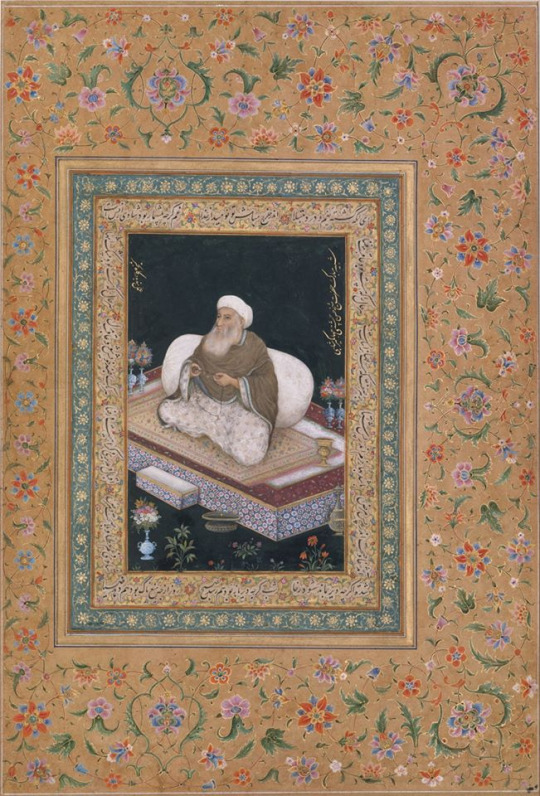
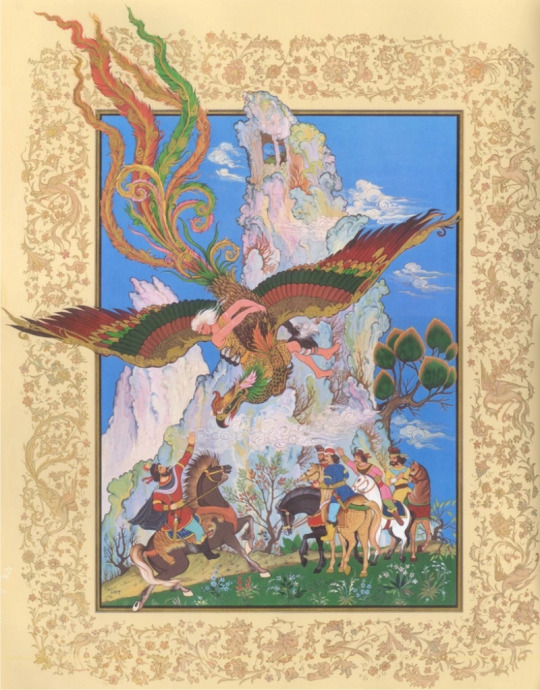
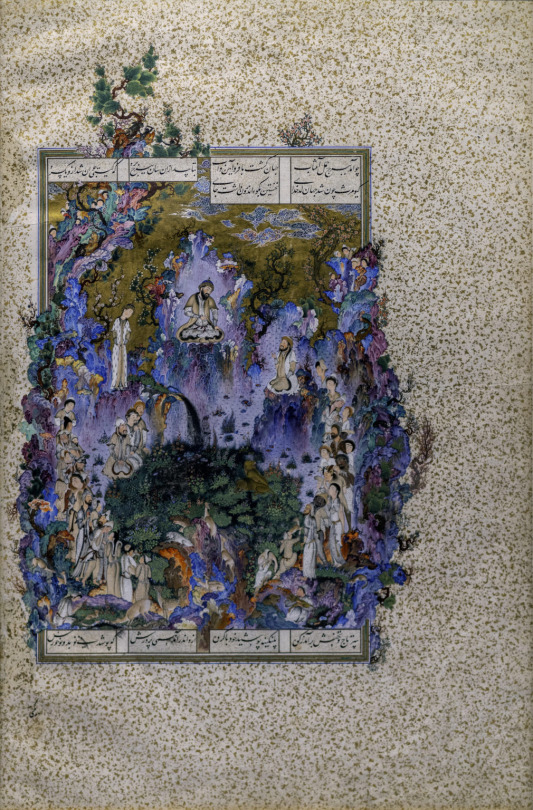
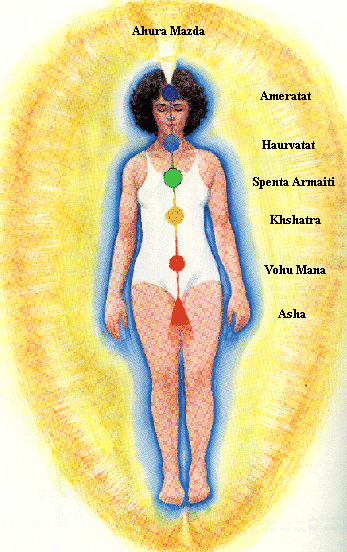
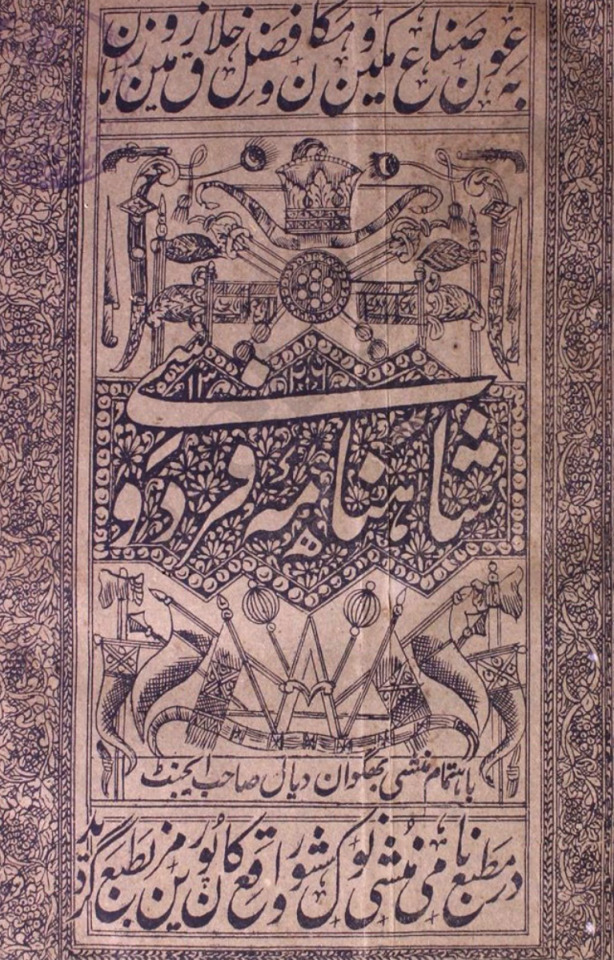
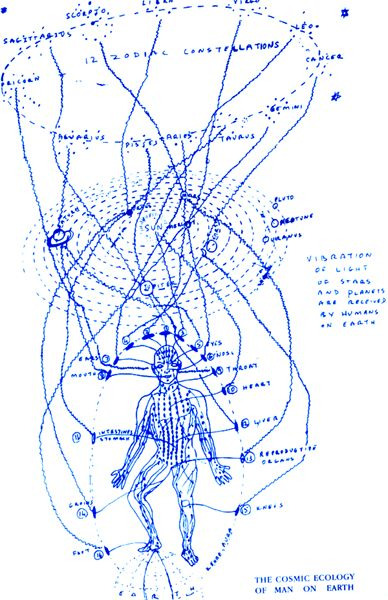
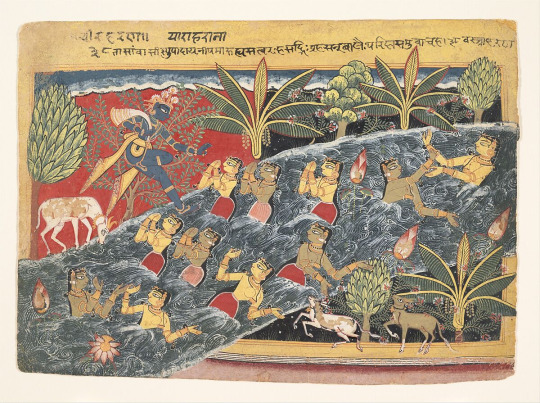
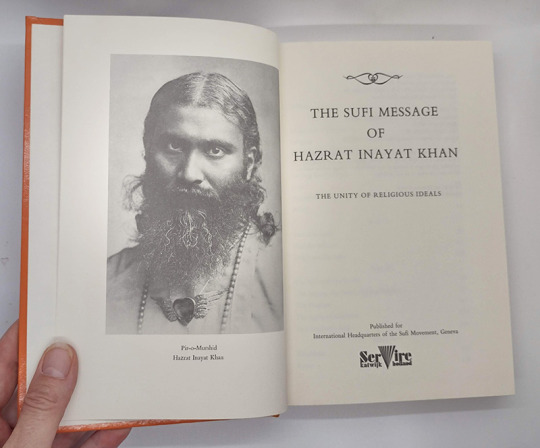
text from Pir Zia Inayat Khan's essay Persian & Indian Visions of the Living Earth in book Spiritual Ecology: Cry of the Earth
photos: Portrait of Shaikh Mu’in al-Din Hasan Chishti / The magical bird Simorgh / Shahnama / Amesha Spentas & Chakras / Shahnama cover Ferdowsi / Bhagavata Purana / Hazrat Inayat Khan
Ideas do not occur in a vacuum, and spiritual ideas are no exception. Sacred visions emerge from the disposition of human personalities, from the shape of historical events, and from the momentum of hallowed customs, but perhaps most fundamentally (transcendental sources aside), they emerge from “airs, waters, and places,” from the character of the landscapes in which they are born.
When epiphanies are redacted and passed down, the loamy pungency of their genesis frequently fades away, so that an abstract doctrine is perpetuated in place of an embodied insight. Such, however, is not always the case. Spiritual traditions are often the deepest repositories of a culture’s knowledge of the ancient bond between person and planet, soul and soil.
[...] The forces of light will thus gain ground, advancing in ascendancy, dispelling malevolence, and speeding the long-awaited day known as the frashkart, when the whole of creation is to be purified, redeemed, illuminated, and rendered immortal.
[...] All that exists is of light, for light is existence itself, the very essence of apparency. God is the “Light of Lights,” and as light kindles light, creation proliferates as a cascade of illumination poured into the dark abyss of nonbeing. In this great chain of being, the angels are links, uniting the manifest world with the infinite brilliance that is its source.
[...] There follows a long, though not infinite, series of Intellects, each receiving light from the Light of Lights and its predecessors, and bequeathing light to its successors. By this causal chain the starry sky is lit up.
[...] Nothing exists on Earth without an underpinning in the world of pure light.
[...] In like fashion, Suhrawardi’s cosmology envisions a universe that is intensely alive and inherently sacred. All existence is the effusion, in pulsing waves, of the holy of holies, the Light of Lights. Transpiring in every clod, puddle, flaming wick, and fluttering breeze is an angelic presence, a sentient and radiant delegate of the cosmic order.
[...] The Qur’an begins, “Read in the name of your Lord” (96:1). What must be read are the ayat, the signs of God. The verses of scripture are signs, but so too are the verses inscribed ”on the horizons and in themselves” (41:53). The holy books of the prophets, Earth’s rapturous geography, and the interior landscapes of the human soul are all of a piece, all pages in a single book, the book in which God’s own story is told. This is a story without end, for, “If all the trees on Earth were pens and the ocean ink, with seven oceans behind it to add to its supply, yet the words of God would not be exhausted” (31:27).
[...] As widely different as were the theological views of Muslim Sufis and Hindu yogis, they had two spiritual perceptions fully in common: the vital livingness of the elements and the status of the human form as a microcosm encapsulating the breadth, depth, and range of the whole universe.
[...] The Vamana Purana sings, “Let all the great elements bless the dawning day: Earth with its smell, water with its taste, fire with its radiance, air with its touch, and sky with its sound.”
[...] Hindu acts of worship are traditionally preceded by bhutashuddhi, the ritual purification of the elements in the body and in the landscape. In this manner the inner and outer dimensions of the universe are brought into symmetry, and the human being is sanctified as an epitome of the surrounding totality. The human heart contains fire and air, sun and moon, lightning and stars, pronounces the Chandogya Upanishad.
The Chishti Sufis share this perception. In the Sum of Yoga attributed to Khwaja Mu’in al-Din Chishti, the entire cosmos is mapped onto the human form:
Know that by His power God Most High created the human body to contain all that He created in the universe: “We will show them Our signs in the horizons and in themselves, until they see …” (41:53). God created the twelve signs of the zodiac in the heavens and also in the human body. The head is Aries, the neck is Taurus, the hands are Gemini, the arms are Cancer, the chest is Leo, the intestine is Virgo, the navel is Libra, the phallus is Scorpio, the thighs are Sagittarius, the knees are Capricorn, the shanks are Aquarius, the soles of the feet are Pisces. The seven planets that revolve beneath the zodiac may be located thus: the heart is the Sun, the liver is Jupiter, the pulmonary artery is the Moon, the kidneys are Venus, the spleen is Saturn, the brain is Mercury, the gall bladder is Mars. God the Glorious and Most High made 360 days in the year, 360 revolutions in the zodiac, 360 mountains on the face of the Earth, 360 great rivers, and in the human body, 360 segments of bone (like the mountains), 360 arteries (like the rivers), 360 epidermal tissues (like the days of the year). The motion of the stomach is like the sea, hairs are like trees, parasites are like beasts of the jungle, the face is like a built-up city, and the skin is like the desert. The world has its four seasons, and these are also present in man: infancy is spring, youth is summer, quiescence is fall, and old age is winter. Thunder corresponds to the voice, lightning to laughter, rain to tears.
To bring microcosm and macrocosm into harmony, yogis and Sufis practiced, and still today practice, kriyas, or meditations, corresponding to the four elements. In his Secret of Love, the twentieth-century Chishti Sufi ‘Aziz Miyan describes the elemental kriyas in this manner: “Earth kriya: Meditate while incrementally burying the body in the ground, from feet to head. Water kriya: Meditate while sitting underwater, lying in the rain, or pouring water over the body. Fire kriya: Meditate before a fire, uniting first with the smoke and then with the flame. Air kriya: Meditate standing on a tree, hill, or roof, wearing a single cloth, facing the wind. Breathe in and out slowly and deeply, inducing the sensation of flight.”
[...] Hazrat Inayat Khan conceived of the Earth as an animate, and in some sense sentient, whole. He wrote, “If the planet on which we live had no intelligence it could not have intelligent beings on it.”9 If Earth possesses a kind of sentience, it follows that the planet may be susceptible to suffering, and Hazrat Inayat Khan made just such an assertion when he wrote, “My deep sigh rises above as a cry of the Earth, and an answer comes from within as a message.” The message of his talks and writings was a call to contemplate the moral and spiritual interconnectedness, and ultimate ontological unity, of all life.
[...] The sacred texts of Mazdaism, Hinduism, and Islam provide a profusion of illuminating perspectives on the nature of embodied existence. While there are undeniable differences in the worldviews communicated in these texts, certain key principles emerge as common understandings. Foremost among these is the insight that the manifest universe is a marvel of providential grace. Following on this is the perception that not only humans, animals, and plants, but all material forms partake of the pervasive light and power of creation, and bear recognition as spiritually alive. Further, the texts make clear the error of imagining human life as hovering autonomously above the natural world. Mystical contemplation of the human form conduces to the realization that the body is profoundly embedded within the wholeness of nature, a totality that each human physically and spiritually personifies. The Indo-Persian prophetic traditions agree: the Earth is alive, we live in and through her, and as we are in her keeping, so is she in ours.
6 notes
·
View notes